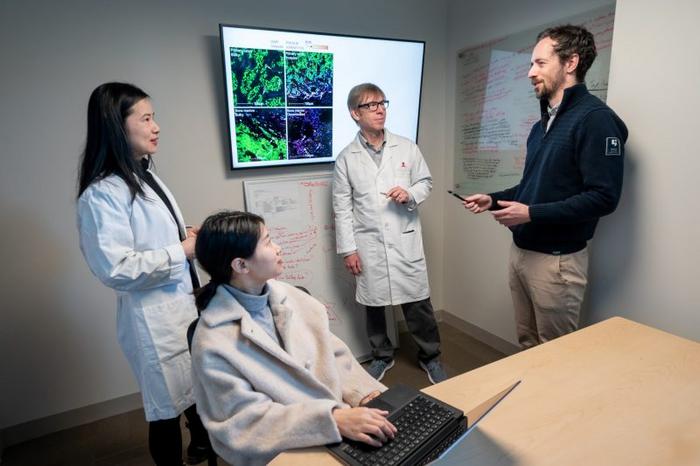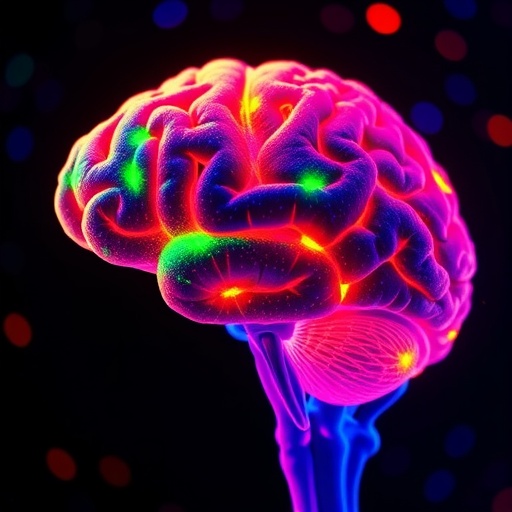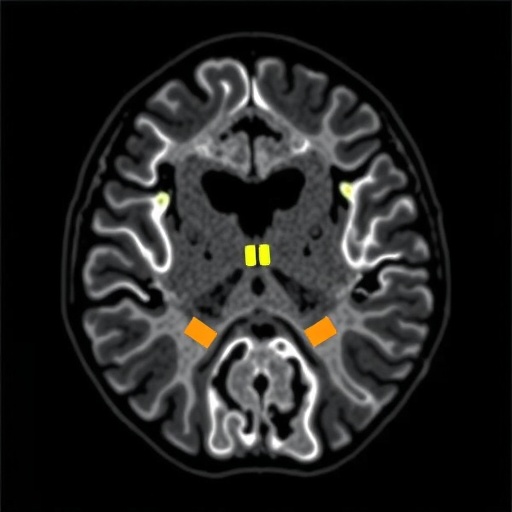
Neuroblastoma, one of the most common solid tumors in children, poses a daunting challenge in pediatric oncology, especially in its high-risk form, where prognosis is notably grim. Over the years, clinicians have attempted various strategies to mitigate this aggressive cancer. Among these, the incorporation of retinoic acid into treatment regimens stands out, as it has historically improved survival rates by 10-15% when administered in the post-chemotherapy consolidation phase. However, the enigmatic behavior of retinoic acid in primarily targeting residual diseases rather than the initial tumors has remained a conundrum, perplexing researchers for decades.
Recent breakthroughs from scientists at St. Jude Children’s Research Hospital have illuminated the path to understanding this age-old puzzle. The research team delved deep into the cellular mechanisms that underlie the disparate effectiveness of retinoic acid against neuroblastoma, unveiling a novel strategy through which the drug operates. The researchers discovered that retinoic acid uniquely exploits developmental biological pathways to incite cancerous cell death, a finding carrying significant implications for future therapeutic interventions.
For nearly half a century, the dichotomy concerning the effectiveness of retinoic acid against metastasized neuroblastoma versus primary tumors had defied explanation. The pivotal insight revealed by the St. Jude scientists is that retinoic acid’s efficacy hinges not merely on the chemical properties of the drug but, intriguingly, on the cellular microenvironment where it acts. The microenvironment—comprising an intricate matrix of signals, proteins, and extracellular components—determines a cell’s response to various stimuli, including drugs.
When neuroblastoma cells metastasize to regions such as the bone marrow, they encounter a microenvironment rich in bone morphogenetic protein (BMP) signaling. This BMP pathway appears to play a crucial role in rendering these cancer cells particularly susceptible to the effects of retinoic acid. The St. Jude research findings indicate that the heightened activity of the BMP signaling pathway integrates with the retinoic acid signaling, manipulating the fate of neuroblastoma cells and enhancing the lethality of the treatment.
Utilizing advanced gene editing technologies, the research team meticulously dissected the genes associated with retinoic acid sensitivity in neuroblastoma cell lines. Their investigations revealed that disruptions in BMP signaling were correlated with diminished responsiveness to retinoic acid, further solidifying the connection between these pathways. The researchers articulated how this relationship echoes during embryonic development, wherein BMP signaling plays a vital role in the survival and differentiation of neural crest cells.
The implications of this research are profound, suggesting that strategic manipulation of the BMP signaling pathway in tandem with retinoic acid could amplify therapeutic effects in neuroblastoma treatment, particularly during consolidation therapy. Furthermore, these insights may extend beyond neuroblastoma, opening avenues for the exploration of similar mechanisms in other malignancies.
The understanding that cancer cells can leverage developmental pathways, such as those controlled by BMP signals, highlights a critical juncture in cancer biology. Finding therapeutic strategies to exploit this ‘hijacking’ phenomenon may revolutionize the approach to treating various forms of cancer. Future research could lead to the design of innovative combinatorial therapies that enhance retinoic acid’s lethality against neuroblastoma while minimizing toxicity to surrounding healthy tissues.
Importantly, this study reflects an intersection of computational biology and clinical research, with computational models aiding the deduction of biological relationships among signaling pathways. The contributions of computational methodologies in deciphering complex biological interactions have proven invaluable, underscoring the necessity of interdisciplinary approaches in contemporary cancer research.
The findings of this study were documented in detail in the prestigious journal, Nature Communications, affirming the necessity of disseminating such groundbreaking research to stimulate further investigations by the scientific community. The publication serves as both an informative resource and a catalyst for subsequent studies connecting cellular microenvironment dynamics with therapeutic outcomes.
As researchers and clinicians reflect on the discoveries made at St. Jude, they are reminded of the importance of nuanced understanding in developing effective cancer therapies. The collaborative efforts of numerous contributors, including those from the St. Jude Department of Computational Biology, showcase the power of teamwork in overcoming the complexities of cancer treatment and signify hope for advancing therapeutic strategies.
In the ever-evolving landscape of pediatric oncology, with neuroblastoma as a focal point, studies revealing the interactions between drugs and cellular environments will prove crucial. As more children with neuroblastoma are treated, the knowledge garnered from this research will inform and refine treatment protocols, ultimately enhancing survival rates and quality of life.
As the pursuit of understanding continues, the research conducted by St. Jude Children’s Research Hospital not only sheds light on the nuanced workings of neuroblastoma but also fosters optimism for children and families facing this challenging diagnosis. Emerging from dedicated research, strategies that harness the development biology of cancer cells to exploit therapeutic vulnerabilities are paving the path for future advances in cancer treatment.
The implications of this study may resonate beyond the walls of St. Jude, influencing how researchers across the world approach cancer biology. By understanding the crucial interplay between signaling pathways and drug responses, we can unify efforts toward more efficacious, less toxic treatment options, thus reinforcing our collective fight against childhood cancers like neuroblastoma.
Subject of Research: Neuroblastoma Treatment Mechanisms
Article Title: Bone morphogenetic protein (BMP) signaling determines neuroblastoma cell fate and sensitivity to retinoic acid
News Publication Date: 28-Feb-2025
Web References: Nature Communications
References: St. Jude Children’s Research Hospital
Image Credits: Credit: St. Jude Children’s Research Hospital
Keywords: Neuroblastoma, BMP pathway, Retinoic acid, Cancer signaling pathways, Pediatric oncology
Tags: cancer treatment consolidation phasechallenges in treating aggressive pediatric cancersdevelopmental biology in cancer therapyhigh-risk neuroblastoma prognosisimproving survival rates in childrenneuroblastoma treatment strategiesnovel therapeutic interventions for cancerpediatric oncology advancementsresidual disease targeting in cancerretinoic acid mechanism of actionSt. Jude Children’s Research Hospital discoveriesunderstanding cancer cell death mechanisms





